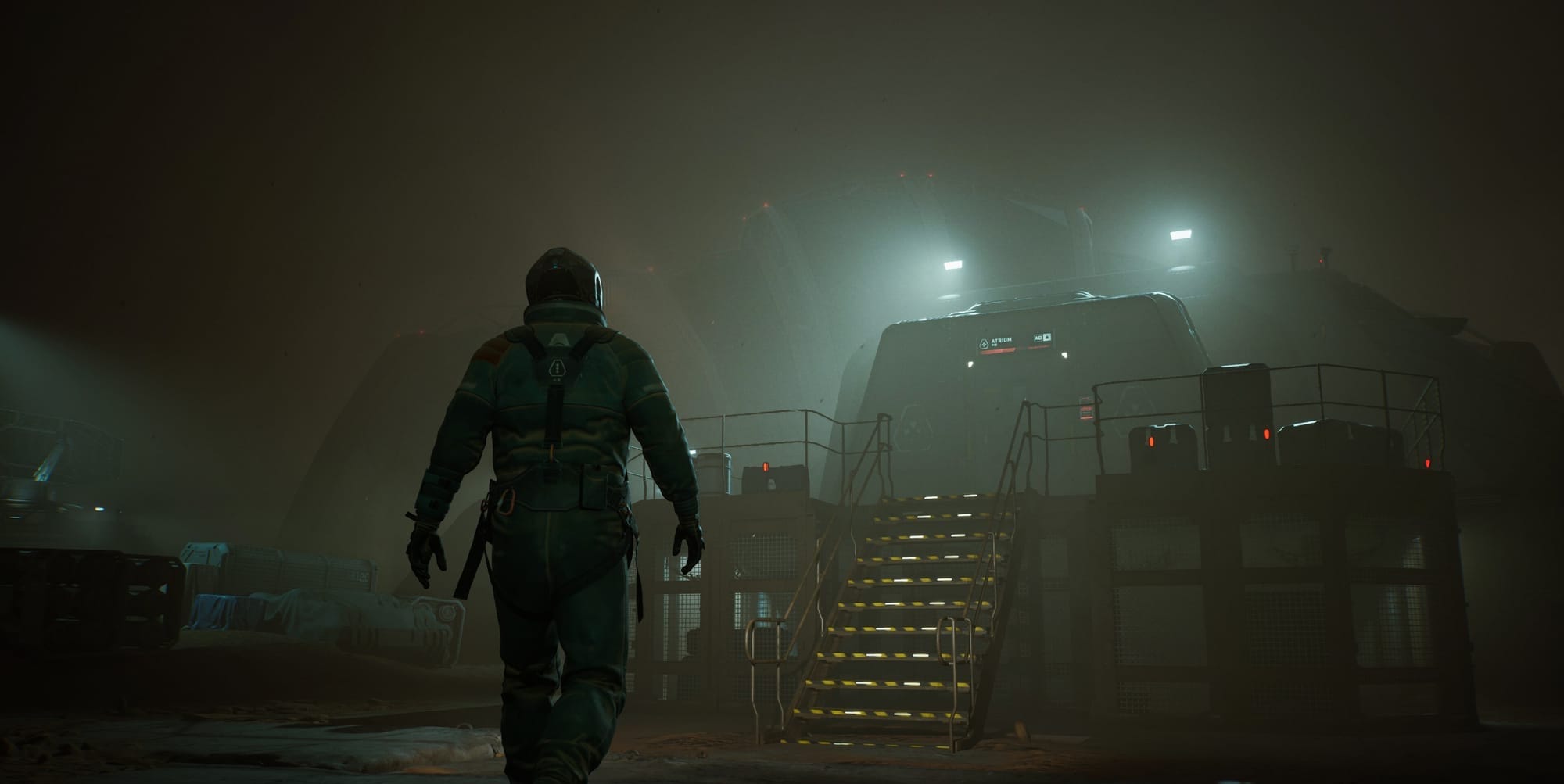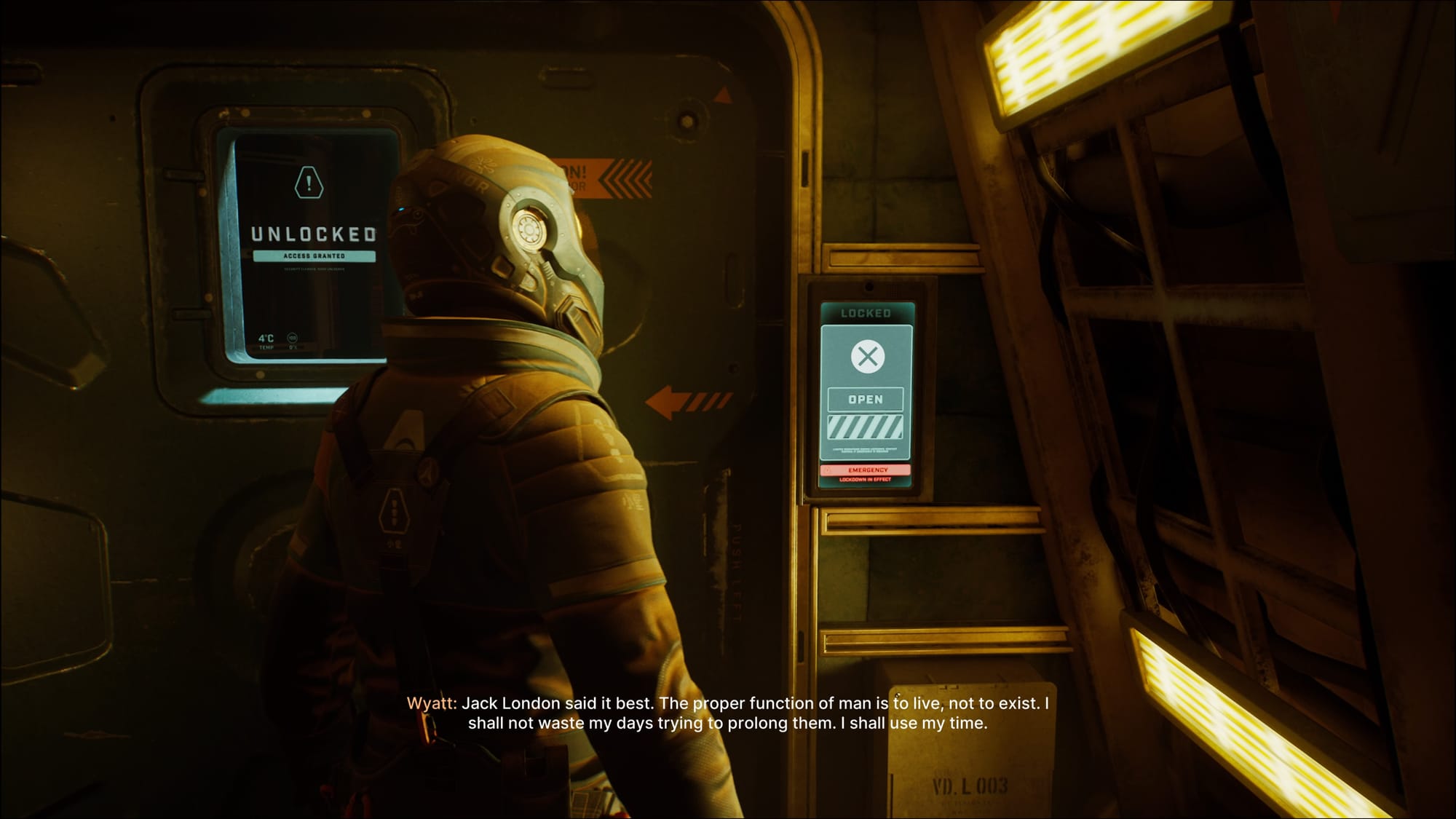Fort Solis Retrospective: A Year Later
Looking back on the sci-fi thriller that got me started on SUPERJUMP

A year ago, I wrote my first story for SUPERJUMP reviewing Fort Solis. In it I praised the game for its thriller elements: it nailed the ominous, barren atmosphere of Mars, along with the stellar acting of Roger Clark, Julia Brown, and Troy Baker to make up the main trio. However, I harked on the game’s short list of traditional gameplay mechanics, consisting of walking around, picking up items, and a short list of quick-time events. Now, a year later and a short bit after the game’s first anniversary, I feel as if I was too harsh on Fort Solis and didn’t appreciate it for what it was.
Fort Solis is a cinematic game published by Dear Villagers and the freshman endeavor for development companies Black Drakkar and Fallen Leaf. Its narrative focus and episodic structure, combined with a short playtime allow it to hit the developers' intended goal of feeling like a series you can binge rather than a game to play. So, I've come back a year later to understand Fort Solis for what it truly is, dissecting it bit by bit to really see what my eyes missed on the first go-round.

The battle against linearity
When looking into interviews with the game's director, James Tinsdale, I learned that Fort Solis was a very different game in its initial conception. In an interview with IGN in 2022, a year before the game's release, Tinsdale talked about what inspired the concepts behind the game. He cited Duncan Jones' Moon for the psychological aspect of the story and characters, and he also named Quantic Dream for its powerful use of narrative technique in video games. He highlighted Dead Space for its "isolated, industrial style," and mentioned God of War (2018) for its lack of loading screens that contribute to its one continuous shot. One company Tinsdale mentioned that stuck out to me, though, was Supermassive Games.
In the same sentence where he mentioned Quantic Dream, Tinsdale also saluted Supermassive Games for its narrative prowess, and this inspiration ran much deeper than it does in the final version of the game. Tinsdale talks about how the world is so open to explore with surface and tunnel navigation that lets the player choose how unnerving they want their experience to be. The multi-tool on Jack's wrist that acts as a map and an easy way to view collectibles in the final version of the game was meant to be more involved in mini-games to unlock parts of Fort Solis and various other uses. Even the QTEs were less formulaic and more consequential prior to Fort Solis' release. Towards the end of the interview, Tinsdale says, "The final scene can go many different ways...That was something we played around with a lot. So, I'm really interested to see what people think, and also fascinated to see which ones people go for." In the final version, Fort Solis only has two endings.

By the end of the game players are free to explore the research station as they please, with the cost of only being able to move at a slow walking speed.
It’s fascinating to learn how the creators initially intended Fort Solis to be freeform. It’s clear that over time the direction changed to be a more linear narrative, but there are still some echoes of these earlier development concepts that stuck through - QTEs are still a thing, just without consequence (outside of the ending) and the world is still available to explore freely with some roadblocks that are unlocked through story progression. By the end of the game, players are free to explore the research station as they please, but at the cost of only being able to move at a slow walking speed. I’m willing to argue that the common complaints with Fort Solis come down to these echoes still being present, creating an experience that feels like it’s missing something while hiding behind a powerful story.
A focus on narrative
Many early reviews of the game — including my own — condemn the Fort Solis for its linearity. We live in an age where narrative-driven games are almost synonymous with choices to make and multiple endings. We like having an impact on a story’s events. But I think that when we don’t appreciate or understand art for what it is, that refusal sets us up for disappointment. At the end of the day, we can only temper our expectations so much, but it’s the ability to look into the foray of new games with an open mind that can change our perspectives.
So, Fort Solis is a game with a strong narrative focus. This, along with the seamless open world, enhances the cinematic nature of the game and immerses the player into four chapters, while still providing the option to discover collectibles naturally. A part of this is helped by the early inspiration from Firewatch's main characters, Henry and Delilah. In my past review, I praised Fort Solis for its character interactions because they feel real. Jack Leary (Roger Clark) and Jessica Appleton (Julia Brown) have the kind of chummy chemistry two long-time work friends would have. They talk about movies and alcohol, and Jessica jokes about Jack being a gruff old man, but what drives it home is that they care about each other. This expansion of the game’s world is immense and is further supported after exploring the actual space station.

It's a human story that takes place all the way on Mars, and that humanity is what drives Fort Solis to be an impactful experience.
Scattered around Fort Solis are video logs from engineers and research staff. Some of them discuss the work they are doing at Solis, while others are recorded messages for their families back on Earth. What’s even more interesting is that these messages are the only way for people to interact socially outside of work. Live video calls have been down for some time by the start of the game, so pre-recorded messages are the only for these scientists and engineers to reach back out to their families. Fort Solis began development in 2020, and the inspiration from this year definitely shows with how strained for connections the people based at Fort Solis are. They’re tired of each other, upset that they aren’t being heard by each other, and being slowly driven into madness. It’s a human story that takes place all the way on Mars, and that humanity drives Fort Solis to be an impactful experience.
Wyatt Taylor is a victim
Wyatt Taylor (Troy Baker) is the main antagonist of Fort Solis and a complex one at that. Wyatt’s characterization taps heavily into the human elements of the game, with video logs showing the conflict that brewed around a lack of safety protocols being followed at Fort Solis. Because of overexposure to an experimental plant compound, engineers and researchers were being inflicted with radiation sickness, and as their efforts pushed forward, Wyatt’s sanity collapsed.
What drives the character home is the multiple facets of motivation. Wyatt Taylor is the chief medical officer and the only one who understands the danger of the research going on. He constantly butts heads with Helen, the scientist leading the project to bring plant life to Mars with an unwavering ambition. Video logs show Wyatt being disinterested in the social aspect of life in outer space, and more concerned with getting his work in order as a medical professional. Other recordings show how much he misses his family, and even mentions his daughter, who wants to be a scientist just like her father. It’s safe to surmise that the combination of cabin fever and a contagious radiation sickness accelerated Wyatt’s spiral into madness leading to the killing spree he goes on.
There's a B-plot going on that details the conflict between Helen and Wyatt prior to the game's events. Helen wants to continue the research at Fort Solis no matter what and throws Wyatt's warnings to the wayside, getting herself and the team sick in the process. This story is interesting because of how it shows the other characters' motivations at Fort Solis, how so few of them acknowledge the pain that they're delivering unto themselves, while others obsess about getting to the finish line.

Wyatt's characterization taps heavily into the very human elements of the game, with video logs showing the conflict that brewed around a lack of safety protocols being followed at Fort Solis.
By the time the player meets Wyatt Taylor, he's too far gone. He's sick, bipolar, and hell-bent on getting rid of the research done at Fort Solis by any means necessary. His character development, combined with Troy Baker's stellar performance, leads to a convincingly broken antagonist that drives the conflict of the story home.
Final thoughts
Throughout my revisit and rethinking of Fort Solis, I've come to conclude that this game is a much more interesting piece than I took it for initially. The sound design is still phenomenal with its attention to detail, and a soundtrack that keeps players on pins and needles. Every minute I spent looking for collectibles in the final act still left me with the fear of Wyatt Taylor popping out, even though I knew this wouldn't happen. The visuals are stunning, the narrative is powerful, and the acting across the board is phenomenal.
There are still some issues that persist: moving around the station itself can be laborious, with no other options besides walking. The lack of consequence for failing QTEs leads to lackluster moments of action, and there’s a small bit of dissonance in the last chapter of the game while playing as Jessica if the player finds Wyatt Taylor’s office before the final confrontation. Nevertheless, I salute Dear Villagers and the rest of the team for their work on Fort Solis, and I’m excited to see their future endeavors knowing how strong knit of a story they can put together.